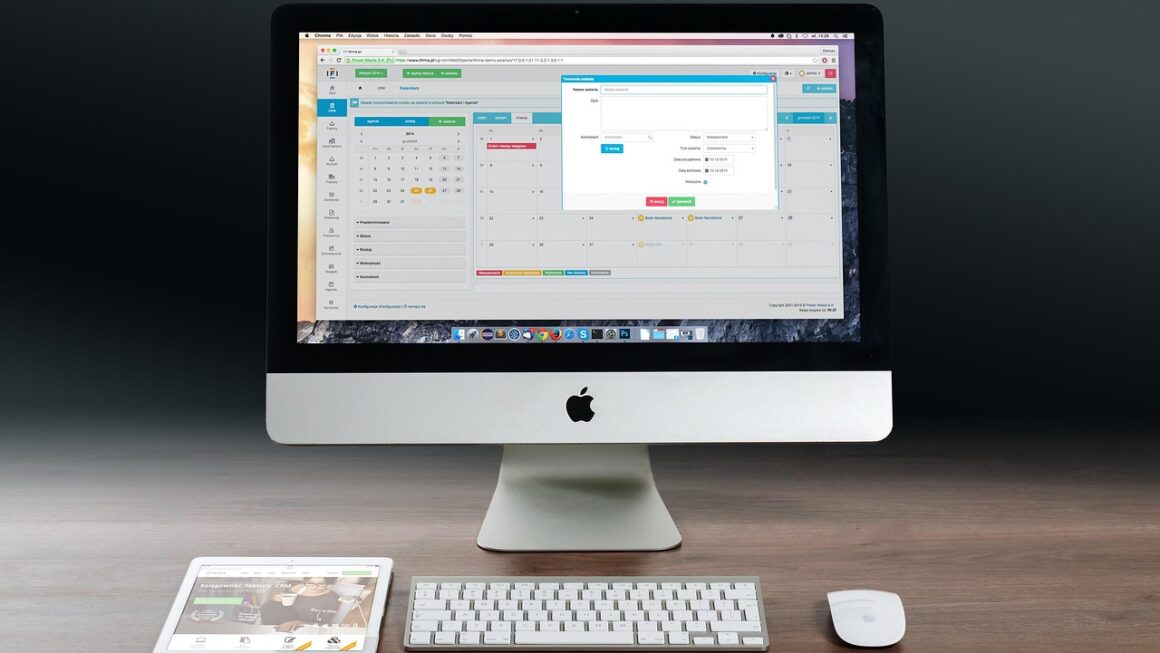Remote onboarding has transformed from a temporary fix to a standard practice for many organizations. Getting it right is crucial for setting new hires up for success, fostering a strong company culture, and boosting retention rates. A well-structured remote onboarding program can make a new employee feel welcome, informed, and ready to contribute, regardless of their physical location. This guide provides actionable insights and strategies to create a seamless and engaging remote onboarding experience.
Building a Solid Foundation: Pre-Onboarding
Setting the Stage Before Day One
Pre-onboarding is the period between when a candidate accepts the job offer and their official start date. It’s a critical window for building excitement and laying the groundwork for a smooth transition. Neglecting this phase can lead to increased anxiety and even reneged offers.
- Welcome Package: Send a personalized welcome email or video from the team, introducing them and expressing excitement about their arrival. Include essential information such as their login credentials, first-day schedule, and any necessary software to download.
- Paperwork Management: Streamline the administrative tasks by utilizing digital platforms for onboarding documents such as contracts, tax forms, and policy agreements. Services like DocuSign or HelloSign can make this process efficient and secure.
- Technology Setup: Ensure the employee’s workstation is configured and ready to go. Ship the necessary equipment (laptop, monitor, keyboard, etc.) well in advance and provide clear instructions for setup and troubleshooting.
- Introductory Meetings: Schedule brief virtual meetings with key team members before the official start date. This helps new hires get to know their colleagues and understand the team dynamics. For example, a 15-minute coffee chat with their direct supervisor can go a long way.
Example: Pre-Onboarding Checklist
The First Week: Immersion and Integration
Virtual Orientation and Introductions
The first week is crucial for setting the tone and ensuring the new hire feels integrated into the company culture. Invest in a well-structured virtual orientation program that covers the essential aspects of the organization.
- Company Culture: Clearly communicate the company’s mission, vision, and values. Use interactive methods like quizzes or virtual tours to engage new hires.
- Department Overview: Provide an overview of each department’s functions and how they contribute to the overall goals of the company.
- Team Introductions: Organize virtual team lunches or happy hours to facilitate social interaction and build rapport. Consider icebreaker activities to make the introductions more engaging.
- Role-Specific Training: Deliver comprehensive training on the employee’s specific role and responsibilities. Use a combination of live sessions, recorded videos, and interactive exercises.
Assigning a Buddy
Pairing new hires with a “buddy” – an experienced employee who can answer questions, provide guidance, and offer support – can significantly improve the onboarding experience.
- Buddy Role: The buddy should be someone approachable, knowledgeable, and enthusiastic about the company.
- Regular Check-Ins: Encourage regular check-ins between the new hire and their buddy. Set clear expectations for the buddy’s responsibilities, such as answering questions, providing feedback, and offering encouragement.
- Informal Support: Buddies can help new hires navigate the company’s informal networks and understand the unwritten rules of the workplace.
Example: First-Week Schedule
- Day 1: Welcome presentation, company culture overview, introductions to key team members, initial paperwork completion.
- Day 2: Department overview, role-specific training, workstation setup assistance, buddy introduction.
- Day 3: Hands-on training, project assignment, goal setting, individual check-in with manager.
- Day 4: Team meeting, networking event, Q&A session with senior leadership.
- Day 5: Performance review process overview, feedback session, goal alignment, planning for the next week.
Utilizing Technology for Effective Remote Onboarding
Choosing the Right Tools
Technology plays a vital role in successful remote onboarding. Selecting the right tools can streamline the process, improve communication, and enhance the overall experience.
- Video Conferencing: Platforms like Zoom, Microsoft Teams, or Google Meet are essential for virtual meetings, training sessions, and team interactions.
- Project Management: Tools like Asana, Trello, or Monday.com can help new hires manage their tasks, track progress, and collaborate with team members.
- Communication Channels: Use platforms like Slack or Microsoft Teams for instant messaging, file sharing, and group discussions.
- Learning Management System (LMS): An LMS can provide access to training materials, track progress, and measure the effectiveness of the onboarding program. Platforms like TalentLMS or LearnUpon are good options.
- HR Information System (HRIS): Automate HR processes, manage employee data, and streamline administrative tasks using an HRIS like BambooHR or Workday.
Creating Engaging Content
Boring training materials can lead to disengagement and poor retention. Create interactive and engaging content that captures the new hire’s attention.
- Multimedia: Use a combination of videos, animations, and interactive presentations to make the training more visually appealing and memorable.
- Gamification: Incorporate game-like elements such as points, badges, and leaderboards to motivate new hires and encourage participation.
- Interactive Exercises: Include quizzes, polls, and simulations to test the new hire’s knowledge and provide opportunities for practice.
- Real-World Examples: Use real-world examples and case studies to illustrate key concepts and demonstrate how the new hire’s role contributes to the company’s success.
Example: Tech Stack for Remote Onboarding
- Communication: Slack for instant messaging and team collaboration.
- Video Conferencing: Zoom for virtual meetings and training sessions.
- Project Management: Asana for task management and progress tracking.
- LMS: TalentLMS for delivering training materials and tracking progress.
- HRIS: BambooHR for managing employee data and automating HR processes.
Fostering Culture and Connection in a Virtual Environment
Building Relationships Remotely
Creating a sense of belonging is crucial for retaining remote employees. Foster opportunities for social interaction and relationship building.
- Virtual Social Events: Organize virtual team lunches, coffee breaks, or happy hours to facilitate informal conversations and build rapport.
- Online Games and Activities: Host online games, trivia nights, or virtual escape rooms to promote team bonding and fun.
- Interest-Based Groups: Create online groups based on shared interests, such as books, movies, or hobbies, to connect employees with similar passions.
- Peer-to-Peer Recognition: Encourage employees to recognize and celebrate each other’s achievements through online platforms.
Communicating Company Values
Remote onboarding provides an opportunity to reinforce the company’s values and culture.
- Consistent Messaging: Communicate the company’s values consistently throughout the onboarding process.
- Leadership Involvement: Involve senior leaders in the onboarding process to emphasize the importance of the company’s values.
- Storytelling: Share stories that illustrate how the company’s values are put into practice.
- Value-Based Activities: Incorporate activities that promote the company’s values, such as volunteer opportunities or community service projects.
Example: Activities to Foster Connection
- Virtual Coffee Breaks: Schedule 15-minute virtual coffee breaks for new hires to connect with team members in a relaxed setting.
- Online Team Games: Organize online games like trivia, Pictionary, or virtual charades to promote team bonding and fun.
- Book Clubs: Create a book club for employees to discuss and share their thoughts on selected books.
- Virtual Happy Hours: Host virtual happy hours with themed drinks and activities to encourage social interaction.
Monitoring and Improving Your Remote Onboarding Program
Gathering Feedback
Regularly solicit feedback from new hires to identify areas for improvement in the onboarding program.
- Surveys: Send out surveys at key points during the onboarding process to gather feedback on the experience.
- One-on-One Meetings: Conduct one-on-one meetings with new hires to discuss their experiences and address any concerns.
- Focus Groups: Organize focus groups with recent hires to gather in-depth feedback on specific aspects of the onboarding program.
- Anonymous Feedback: Provide an anonymous feedback mechanism to encourage honest and candid responses.
Measuring Success
Track key metrics to assess the effectiveness of the remote onboarding program.
- Retention Rate: Measure the percentage of new hires who remain with the company after a specified period (e.g., 6 months, 1 year).
- Time to Productivity: Track the time it takes for new hires to reach a specified level of productivity.
- Employee Engagement: Measure employee engagement levels using surveys or other assessment tools.
- Feedback Scores: Monitor feedback scores from new hires to identify areas for improvement.
Example: Key Metrics for Remote Onboarding
- Retention Rate: Increase the retention rate of new hires to 90% within one year.
- Time to Productivity: Reduce the time to productivity for new hires to 3 months.
- Employee Engagement: Achieve an employee engagement score of 4.5 out of 5 for new hires.
- Feedback Scores: Maintain an average feedback score of 4 out of 5 for the onboarding program.
Conclusion
Effective remote onboarding is a strategic investment that can pay significant dividends in terms of employee engagement, productivity, and retention. By focusing on pre-onboarding, creating engaging experiences, leveraging technology, fostering culture, and continuously monitoring and improving the program, organizations can create a seamless and welcoming experience for new hires, setting them up for success from day one, no matter where they are located. Investing in a robust remote onboarding process isn’t just about efficiency, it’s about building a strong, connected, and high-performing team, ready to tackle any challenge.




